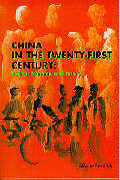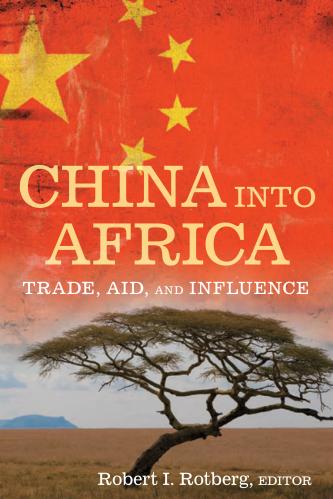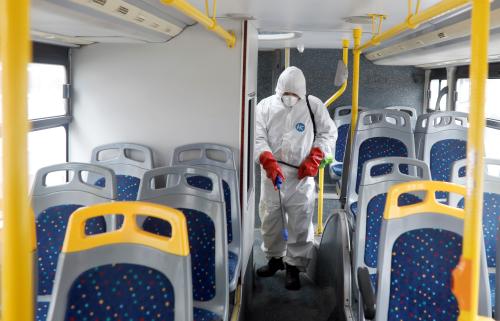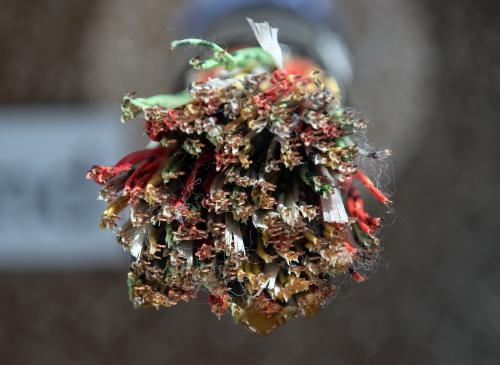The year 2020 is hardly the first time the world has been struck by a pandemic. Disease transmission on a wide geographic scale, causing massive illness, death, and economic disruption, has been recurrent in history. Fourteenth-century plague and the cocktail of diseases at the heart of the Columbian Exchange from the late fifteenth century onward are just two examples of the complex relationship between pathogens and people.
Comparing the current COVID-19 pandemic to past episodes suggests several parallels in human reactions to disease. Many generated disinformation, scapegoating, and social distancing similar to what we are witnessing today. The recent spread of COVID-19 caused by the novel coronavirus demonstrates that this rapidly churning biological system—even when we don’t fully understand its transmissibility or fatality rate—comes wrapped in layers of politics, economics, demography, and culture that echo historical patterns.
Global connectedness
It has taken less than three months from the apparent first detection in Wuhan, in Hubei Province, China, of an unknown viral disease to its establishment in more than 140 countries, with more than 160,000 known cases and more than 5,000 deaths at the time of this writing. Spread at this pace reflects the connectedness, the sheer volume and speed of persons traveling and mingling, of the early twenty-first century. But pandemics by their very nature happen only when efficient transmission chains operate over long distances and span far-flung populations.
Global connectedness is not a new thing. For one example, the best currently available bioarcheological data indicate that the second plague pandemic—the spread of bubonic and pneumonic plague caused by the bacillus Yersinia pestis, the first phase of which was the “Black Death”—entered Europe via what is now southwestern Russia and the Crimea and spread in seven years (1346-1353) through virtually all of Western Europe, along well-established overland and seaborne trade and communication routes.
For another, the Columbian Exchange—the encounter between people, plants, animals, and micro-organisms from Europe and Africa on the one hand and the Americas on the other, starting at the end of the 1400s—generated catastrophic mortality among New World indigenous peoples who lacked herd or population immunity to the pathogens arriving with the newcomers, smallpox in particular, reducing indigenous populations by 80 per cent or more within a century. Both these pandemics straddled critical inflection points in the history of globalization. In the one case, long-established trade and military routes provided the means for astonishingly rapid disease spread, while in the other, transoceanic voyages connecting the Old and New Worlds provided the one link needed for an unprecedented mixing of disease agents and susceptible people.
Disinformation and Scapegoating
One common element across historical pandemics is widespread disinformation, and COVID-19 has already spawned an impressive crop of conspiracy theories. Widespread panic, especially when it involves a disease with unknown and lethal consequences, lends itself perfectly to fringe notions reinforcing already-held world views, producing what the World Health Organization recently termed an “infoepidemic”. The most notorious historical parallel was the massacre of Jews in Western Europe during the Black Death, with suspicions of well-poisoning resulting in mass murder across several hundred communities (in the face of vigorous condemnation of this persecution by the pope of the day). But that is not the only example of scapegoating. Contemporaries claimed that Tartars catapulted the corpses of plague victims into the besieged Genoese fortress at Caffa on the Black Sea during the Black Death, and that British troops distributed blankets from smallpox victims to Native Americans in the eighteenth century, as deliberate biological warfare (however well-documented those contemporary claims are, historians remain divided about their accuracy).
What all these allegations have in common with each other, and with COVID-19, is the way they reflect anxieties projected across groups and nations, projections of “the other”. It didn’t take long for discussions of the current pandemic to spin off debates about whether naming a disease for its apparent point of origin carries connotations of accusation, even xenophobia, and this is another trait shared with previous pandemics: “We are We because They gave Us this disease.”
An especially apt historical parallel to this is syphilis. The first clear description of syphilis came in about 1495, amidst military action by French troops besieging Naples (which had a Spanish garrison), a prime example of how mass troop movements historically left death from disease as much as from combat in their wake. Within ten years syphilis had established itself in every European country. There is an ongoing debate about this disease’s origins: it might have come from West to East as an early commodity of the Columbian Exchange, it might have been present but not recognized in Europe earlier, it might have been a spontaneous mutation of a related pathogen that had a global footprint. Possibly because of its rapid spread, possibly because it was a sexually transmitted disease that caused very obvious disfigurement, its early nomenclature was almost a flowchart of national antagonisms: Italians called it the French disease (as did the English and Germans a little later), Russians called it the Polish disease, Turks called it the Christian disease, and this does not exhaust the catalog of ascriptions.
The othering of Chinese by Americans in disease-related terms has a long history, too. The Chinese Exclusion Act, passed by the U.S. Congress in 1882 and imposing an absolute ban on immigration by Chinese, was the culmination of a backlash against previous decades of Chinese laborers’ presence in the western part of the country. Epitomizing those ethnic portrayals was a cartoon in the San Francisco Illustrated Wasp in 1881 by George F. Keller, portraying a caricature of a Chinese man posing as a proto-Statute of Liberty figure, surrounded by the labels “Filth,” “Immorality,” “Diseases,” and “Ruin to White Labor.”
Flattening the Curve
Right now, in mid-March of 2020, Americans are getting a full taste of communicable disease mitigation—measures aimed at slowing the exponential rise of new infections, once a disease is already established within a population—and are becoming familiar with two related terms. One is “social distancing”: for instance, closing schools and universities, cancelling sports events and religious services, encouraging work from home and self-isolation, to make each person-to-person jump of the pathogen more difficult. The other is “flattening the curve”, in other words preventing new cases from piling up too quickly (preventing the curve of new cases over time from rising too sharply) and thereby swamping the capacity of hospitals and medical personnel to deal with them. However successful mitigation might be depends upon factors simply unknowable at the time, and such measures may have unexpected side effects. The historical textbook example of the approach—and its success under the right circumstances—compares Philadelphia and St. Louis in late 1918 during the influenza pandemic of that year. Philadelphia threw a parade, to celebrate the armistice after World War I. St. Louis imposed strict social distancing. St. Louis quite literally flattened the curve: its death rates spread over a longer but very much lower curve than the deadly spike in mortality that Philadelphia experienced.
Over the long perspective of historical time, public health measures (broadly defined) have done incomparably more to stem disease spikes, and improve health generally, than modern clinical medical or pharmacological interventions. The principle of isolating the diseased is at least as old as the Torah, even if based upon premises of uncleanness as much as transmissibility. The Black Death is part of this history also: the first government-directed quarantine systems originated in mid-fourteenth-century Venice, the “quaranta giorni” or forty days of mandated isolation for incoming ships.
The effectiveness of quarantine and similar measures did not depend upon any understanding of how diseases actually worked: the germ theory of disease was a product of the late nineteenth century, automated whole genome sequencing is barely thirty years old. Many significant milestones in public health before then stemmed from empirical observation, an often-cited example being the graphical demonstration during a cholera outbreak in London in 1854 that deaths clustered around particular public water pumps. Removing the handles of those pumps immediately dropped death rates, a lesson in miniature of the more general rule that sewer systems and clean water have raised historical life expectancies more than most directly medical interventions.
Bioinformatics
One advantage that epidemiologists have today in trying to chart and understand such a fast-developing pandemic as COVID-19, compared with even just a few decades ago, is genome-mapping. It’s now possible to read the genetic sequence of a disease agent very quickly from clinical samples, share them with other researchers, and begin to map out a phylogenetic tree: like a family tree for a micro-organism, the purpose is to trace the genealogy of pathogens from many particular infected individuals backward in the chain of transmission, which helps to clarify the pandemic’s spread over time and space and its mutations from ultimate origin.
While medical and public health personnel are working at full speed to anticipate and deal with clinical cases, the work of researchers in bioinformatics (the interdisciplinary research that collects and analyzes genomic data) is just as critically important in responses to COVID-19. It has been possible to extend those techniques to biological materials gathered from archeological sites dating back at least as far in time as the Black Death, and to construct phylogenetic trees for historical plague and syphilis. As a result, we’ve learned more about those long-ago diseases in the last twenty years from bioinformatics than, probably, we did from the entire preceding study of the historical record. COVID-19 will take longer to understand, but our new tools will make this pandemic easier to decipher.









Commentary
Lessons from past pandemics: Disinformation, scapegoating, and social distancing
March 16, 2020